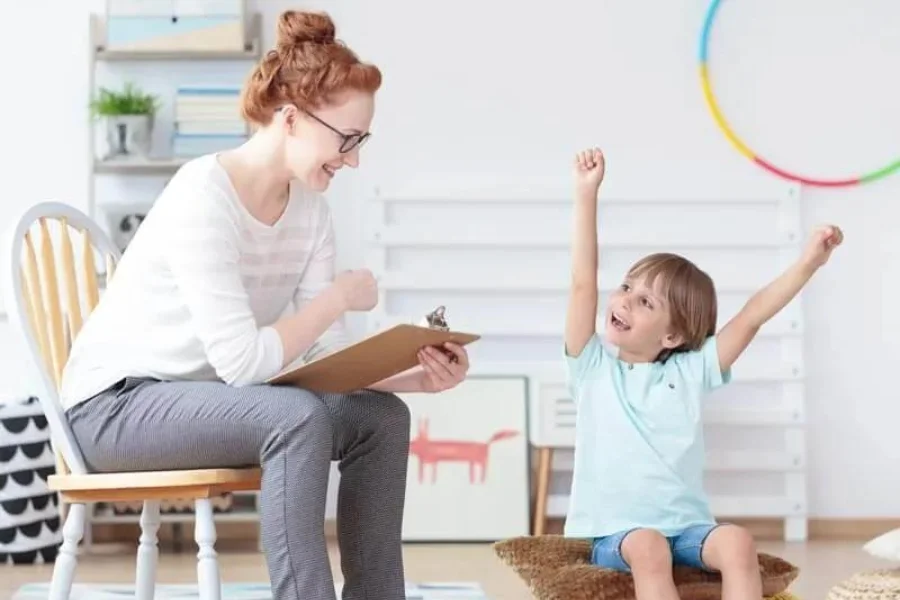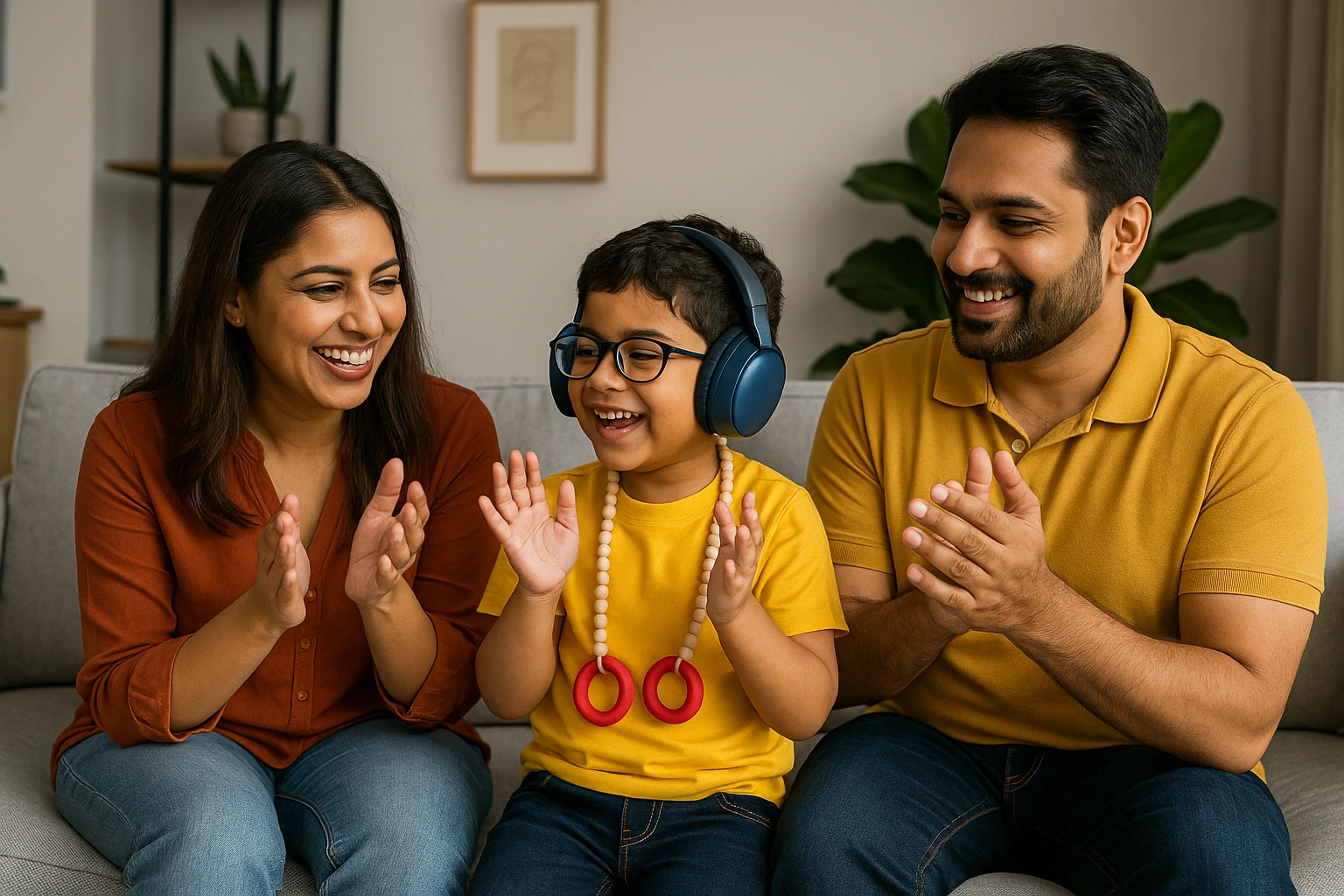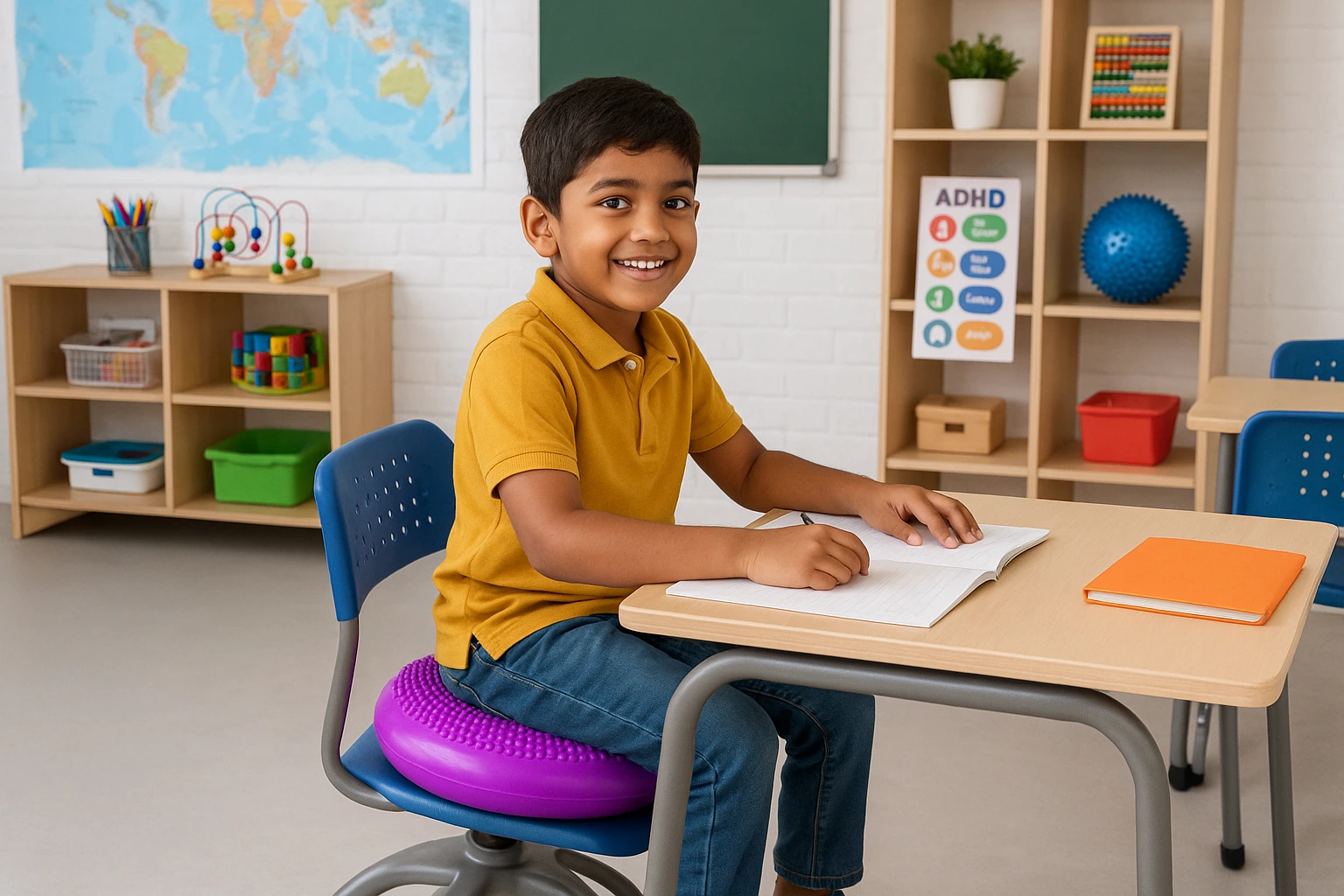Signs, Symptoms, and Help for ADHD in Children
Signs, Symptoms, and Help for ADHD in Children
ADHD or Attention Deficit Hyperactivity Disorder, a commonly found neurological condition in children, has a huge impact on the prime proficiencies of the child. The most crucial skills that shape a child’s academic journey, such as focusing, concentrating, and behaving acceptably, are affected by ADHD. The symptoms of ADHD can appear as early as 3 years, but the major influences of ADHD begin with the onset of age 6 and are heightened by the age of 12.
ADHD in Children is a neurological condition arising due to a variety of genetic or environmental factors. It is not a result of bad parenting or excessive mobile watching. It is a medical condition that needs proper scrutiny of symptoms that helps parents and teachers to provide the child precise academic and emotional aid that helps them navigate their pathways to a bright future.
Table of Content
Normal Kid Behavior vs. ADHD Symptoms
Parents and Educators should be aware of the differences between normal kid behaviour vs. ADHD Symptoms. Once there is clarity of what the difference is between normal kid behaviour and ADHD symptoms, parents and professionals can be well-equipped to provide the appropriate aid for the child. Although there is a lot of similarity between normal child behavior and adhd signs, the severity of these symptoms and the impact of ADHD symptoms can be more disturbing.
Key differences include:
Attention Span
- Normal: Short attention span, especially for mundane tasks.
- ADHD: Cannot focus on enjoyable tasks, makes careless mistakes, and seems not to listen.
Activity Level
- Normal: Very energetic (particularly in stimulating settings).
- ADHD: Perpetually moving, fidgeting, and struggling to stay still in calm settings.
Impulsivity
- Normal: Occasionally blurts out or interrupts.
- ADHD: Often interrupts, is frequently unable to wait, and has intrusive behaviors resulting in problems in daily life.
Emotional Response
- Normal: Upset easily; can typically calm down with support.
- ADHD: Very intense emotions that change rapidly, struggles to manage frustration or disappointment.
Task Completion/Organization
- Normal: May forget or lose items occasionally.
- ADHD: Forgets tasks regularly, loses items often, and struggles to carry out instructions.
Response to Structure
- Normal: Improves with routines.
- ADHD: Challenges persist despite structure and consistent discipline.
Recognizing these patterns helps in offering timely support and tailored interventions for children with ADHD.
To download the brochure of the Special Ed Course, Click Here!
To enrol in the Special Ed Course, Call or WhatsApp on +919321024137 / +919869866277.

Source: medium
Supporting a Child with ADHD
Supporting a Child with ADHD requires a lot of endurance, thorough training, and appropriate strategies that help the child get the right support in the concerned areas. As ADHD impacts some of the most life-essential skills of the child, providing the child with precise strategies and constant support impacts their overall well-being in the long run.
Below are helpful ideas to support children with ADHD:
- Create Clear Routines
- Break down tasks into smaller steps
- Use positive reinforcement
- Provide a distraction-free environment
- Work with Teachers and Therapists
- Teach Social Skills
Children with ADHD in Children may struggle with friendships due to impulsive behavior. Role-playing, clear feedback, and support in social situations help build stronger relationships.
Supporting ADHD in Children involves ongoing effort, but with the right tools and mindset, children can thrive both academically and emotionally.
To download the brochure of the Special Ed Course, Click Here!
To enrol in the Special Ed Course, Call or WhatsApp on +919321024137 / +919869866277.

Parenting Tips for Children with ADHD
Parenting a child with ADHD demands a great deal of systematic planning, empathy, and patience on the part of Parents. The strategies mentioned below can be beneficial to children, making their lives simpler.
Create a Predictable Routine
Children feel secure with structure. Set fixed times for daily activities and use visual charts to reinforce routines.
Give Clear Instructions
Do not bombard the child with heavy, complex instructions that will confuse him before they even begin the task.
Use Positive Reinforcement
Praise effort and good behaviour often.
Maintain a calm mindset.
Be well-prepared to handle the child’s emotional outbursts with a pleasant attitude. Be calm to prevent any major issues to occur or escalation of the situation.
Practical goal setting
Be realistic while goal setting. The child’s well-being should be given the highest priority, and no goals should be overwhelming for him.
Lessen any diversions
There should be minimal distractions for the child to concentrate completely on the task. There should be zero clutter around him and no toys or gadgets to be used around him.
Involve Teachers
Share effective strategies to help your child at home with their teachers. Make sure to request updates from teachers and look at the school’s options for accommodations.
Get Your Child Moving
Ensure that your child gets his daily dose of outdoor physical activities that helps to regulate their energy ad emotions well helping them focus better.
Get Professional Help
Think about therapy, counselling, or asking a physician when the challenges extend beyond parenting assistance.
All of the above will help promote consistency and emotional health in children with ADHD.
Supporting children with ADHD in Children takes time and consistent effort. One principle that must be adhered to clearly is that each child is unique with specific needs and competencies. Each child has different challenges, and no child will be able to understand a topic using the same method.
Only when the child’s strengths and weaknesses are assessed and, accordingly, a variety of real-life strategies are used the child’s true potential be attained.
To download the brochure of the Special Ed Course, Click Here!
To enrol in the Special Ed Course, Call or WhatsApp on +919321024137 / +919869866277.

School Tips for Children with ADHD
ADHD has a major impact on the child’s focusing power and his ability to react without thinking, leading to incomplete tasks.. So it truly just takes continued, consistent, easy, and simple strategies to support their learning in school.
- Routine & Structure: Develop and utilize visual schedules, rules, and signal transitions. Predictability can reduce anxious feelings and improve concentration.
- Clear instructions: Provide one-step instructions, repeat the directions, and divide the directions into smaller tasks.
- Productivity-enhancing breaks: Let the child vent out his excess energy by giving him mini breaks, helping him to move around, and then focus better.
- Appreciate and Acknowledge: Celebrate the minutest achievements of the child by giving him by appreciating him amidst his peers, helping him bask in confidence, and striving harder for better results.
- Suitable Seating Measures: Use appropriate seating measures for the child that help him be calm and composed, focusing better throughout the class.
- Added Benefits: The child should be judged in a manner that he can display what he has understood well, for e.g., instead of writing an assessment, let the child make and display a project explaining what he has learnt.
- Cooperative networking between home to school: At any point of time ensure that the parents are well-updated about the child’s progress and latest happenings by maintaining clarity of communication.
- Planning for Emotions: Teach various social skills, identify peer buddies for children to pair up with, and/or have access to a school counselor.
To help children with ADHD, the process begins with getting a clear diagnosis of the disorder, post which the various professionals involved in the child’s journey can devise a strategic plan to support the child’s learning as well as his daily functioning. Early identification of the signs of ADHD helps parents and educators to be well-prepared of providing the child with desired support needed for him to accommodate comfortably into a regular classroom transforming his learning experiences.
If your career goals are aligned to make a positive impact on the lives of students with ADHD undergoing a Diploma in Special Needs Course at Vidhyanidhi Education Society (Govt. Regd.) can be a life-changing decision for you unlocking doors of endless opportunities at eminent schools. This Diploma is one of the most favoured academic programs by aspiring teachers who want to establish a bankable teaching career with high projected career growth, enabling them to make a powerful impact on the academic as well as emotional well-being of young, budding students.
Turn your passion into purpose—join Vidhyanidhi’s Special Ed Course today!
To download the brochure of the Special Ed Course, Click Here!
To enrol in the Special Ed Course, Call or WhatsApp on +919321024137 / +919869866277.
Signs, Symptoms, and Help for ADHD in Children
FAQs
What Support is Available for Children with ADHD?
Support for Children with ADHD in the form of adapted teaching methods, creating safe learning spaces for the child are few ways to support children with ADHD.
What Age is Hardest for Kids with ADHD?
For Kids with ADHD, the beginning of their 12th year can be detrimental as the symptoms become more life-altering and affect their overall well-being.





